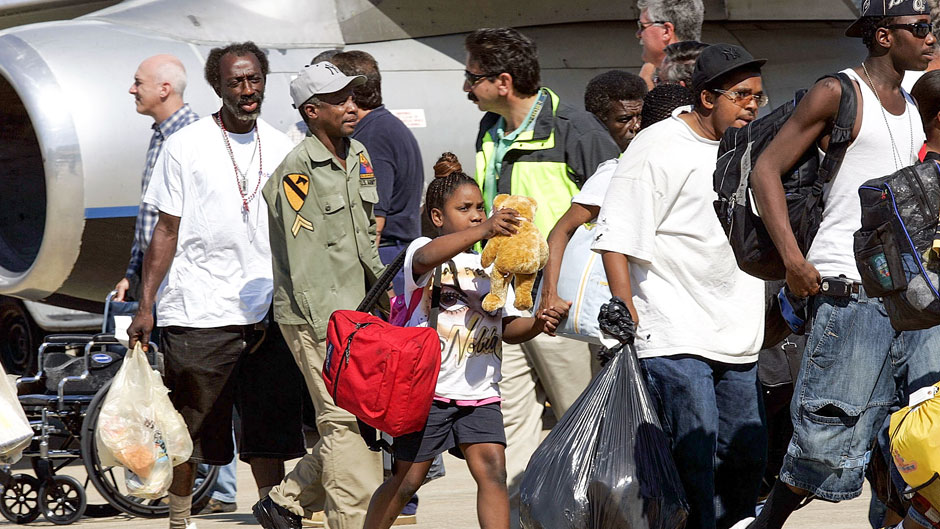Thirty years ago on Aug. 24, 1992, Hurricane Andrew made landfall south of Miami as a powerful Category 5 hurricane causing then-record damage and leaving tens of thousands of South Florida residents homeless and without jobs.
Recovery was a gradual effort as many South Miami-Dade residents rebuilt and rekindled a sense of normality—but for some, returning to their previous level of functioning proved to be more challenging, especially for children.
More than halfway through the 2022 hurricane season, Annette La Greca, distinguished professor of psychology and pediatrics at the University of Miami College of Arts and Sciences, shared some tips for caregivers to help children cope before and after a natural disaster. A leading expert on the topic of natural disaster preparation and recovery, she has studied trauma, risk, and resilience in children for more than three decades.
La Greca’s research has illustrated how children can feel frightened and confused before and after a disaster. She provides information on how children and adolescents react to disasters, and what can be done to help them cope.
Before a Disaster
Even before a disaster has occurred, and especially during the days leading up to a potential hurricane strike (or wildfire/or flood), children and families may feel very stressed. This is because of the uncertainty about the potential disaster and fears for personal safety. Families may be wondering or discussing whether they need to evacuate, trying to figure out where to go, and deciding what to do to protect their home and possessions. Children may be asking: “Will the hurricane strike?” “Will it be bad?” “How bad?” “What can I do to keep safe?”
Key signs that a child is stressed before the storm:
- Expresses fear or worry about the hurricane/disaster.
- Has trouble falling or staying asleep.
- Finds it difficult to pay attention and concentrate (as in school).
- Is more angry or irritable than usual.
- Complains of stomachaches, headaches, or other sick feelings.
After a Disaster
If all goes back to normal after a disaster, children will eventually settle down. But, if they experience a life-threatening situation, such as doors or windows breaking in the place they stayed or seeing someone get hurt, or if they felt like their lives were in danger, they may display a stress reaction. These responses also may occur if the child and family experienced a lot of loss and disruption because of the disaster—such as their home being damaged or destroyed, loss of pets or toys, or school being disrupted.
Children who are stressed after a hurricane would show some of the aforementioned symptoms. But they also may show some of these additional signs of stress:
- Worry that another disaster or something bad might happen.
- Have repetitive thoughts or dreams about the disaster.
- Feel sad and lose interest in things they previously enjoyed.
- Feel that people don’t understand them.
- Feel jumpy and nervous.
- Get angry at others more than usual.
It is normal for children and adults to experience multiple signs of stress after a disaster. However, if the feelings do not resolve in a few months, as things get back to normal, they may benefit from seeking professional help.
Tactics for caregivers to help their children manage stress
- Keeping lines of communication open is always important. You can encourage children to express how they are feeling—even using emojis—or have them write how they are feeling, or ask them directly: How was your day? What was the best thing that happened to you? What was the thing that bothered you most?
Caregivers who are good listeners, and who talk to their children on a regular basis, will find it easy to learn how their children are reacting to a disaster—both before and after the event.
- One thing all family members can do is help to prepare their “go-to” kits for a disaster (i.e., what to take with them if leaving home) and help with preparations around the home. Everyone should participate in creating a family disaster plan and then in implementing the plan, should a disaster threaten to strike.
- Once disaster preparations are made, all family members can help by “distraction” and “relaxation.” Engage in some family activities. Try to identify some fun things that don’t require electricity, like a card game or board game.
- Make sure everyone has sufficient batteries to power the devices they use to relax.
- Everyone in the family should try to practice good “stress management” by eating well, getting exercise, and keeping to a regular sleep routine.
- Limit TV/social media viewing of disasters for everyone. Nonstop viewing of disaster-related news coverage will just add stress. Get the vital information you need, and then turn off the TV, computer, or device.
More information regarding healthy coping tactics and solutions to special situations can be found in La Greca’s book, “After the Storm.” Download a free copy in both English and Spanish.

